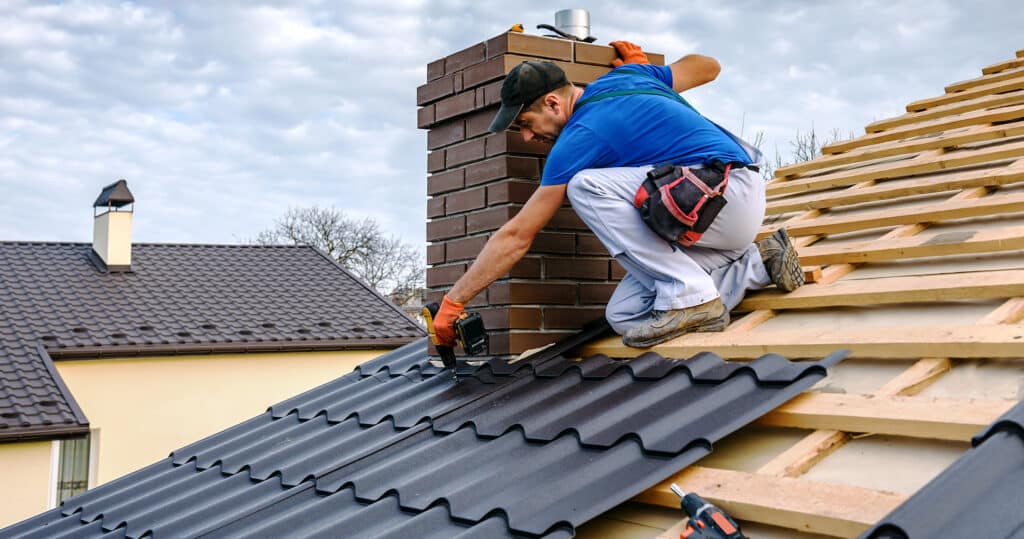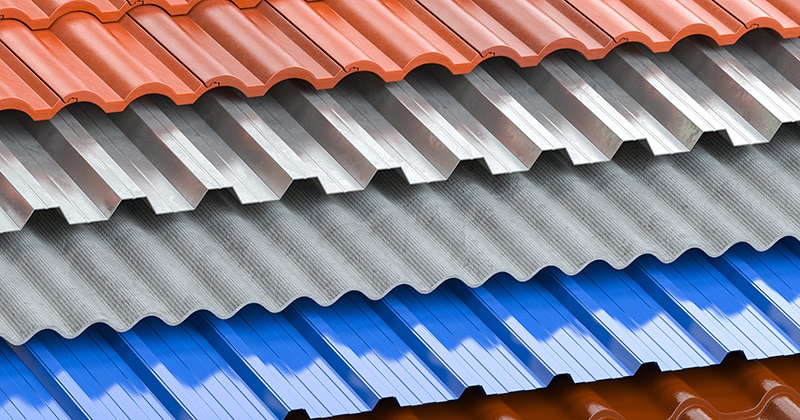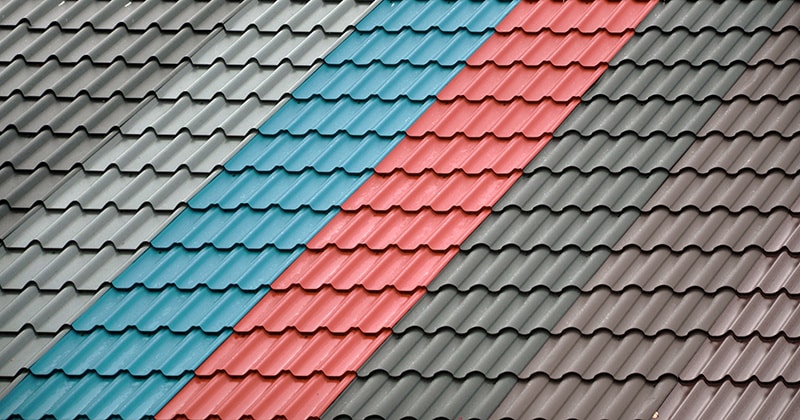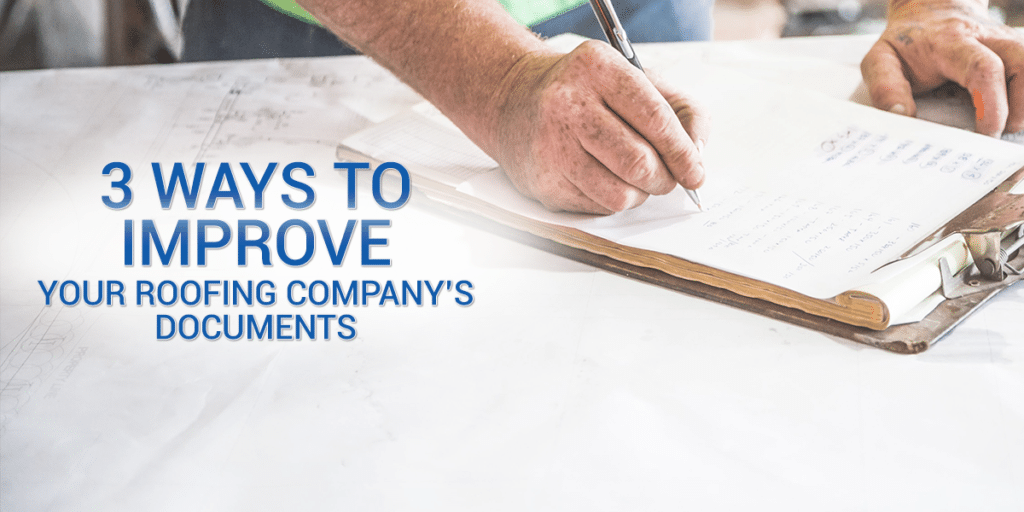
Color plays a vital role in the appearance of a building. But there are other facets that should factor into choosing a color when it comes to roofing, such as climate, energy efficiency needs, and durability.
Metal roofing colors come in a variety of shades and finishes. Here’s how to help your clients choose the best one. Learn about available options and what to consider when making a selection.
Understanding Metal Roofing Colors
Choosing the right metal roofing color can make or break the appearance of a building. There are multiple factors to consider when exploring metal roofing colors.
The first consideration for a customer is usually how it looks on their property, but that’s not the only important point to consider.
The color of the roof can affect how hot or cool the building gets. This can be a very important consideration if you serve an area that sees extreme seasonal temperatures. The color can cost the customer more or save them money, depending on their choice.
Durability is also a factor. If you’re located somewhere with more intense weather, you’ll want to ensure that your roof color coatings are up to the task. Different paint systems have different lifespans. You don’t want a customer’s roof to immediately fade, chalk, or chip.
Metal Roofing Color and Finish Options
Luckily, you will find a huge range of metal roofing colors and finish selections today. This is particularly true for residential products.
Light colors include basic white as well as shades like tan, stone, and pale gray. Darker hues let you choose from black, charcoal, slate, and bronze.
Want something brighter? Check out metal roofing in red or blue. There are also vivid green tones similar to the verdigris that develops when copper roofing oxidizes.
If you’re struggling to find just the right shade, don’t worry. There are custom metal roofing colors available, too. Paint scanners can match a color sample to get a precise hue.
For another layer of interest, consider offering different roofing finishes. Your client might like textured or metallic finishes. There are also patterns made to look like antique rusted metal roofs without the actual rust.
An unpainted galvanized look is also popular. It works equally well with modern architecture and vintage homes.
Types of Metal Roofs
Just as with color, there is a large menu of metal roofing types to explore. The type of roofing may affect what color choices and finishes are available.
Commonly requested metal roof types include:
- Corrugated metal roofing: alternating ridges that create a wave-like effect, usually found in aluminum
- Standing seam metal roofing: long, flat vertical panels with ribs on each end to make an interlocking system (can be made of copper, aluminum, or steel)
- Stone coated: covered with stone granules and cut to look like traditional terracotta tiles, asphalt shingles, or wood shakes
FROM ONE OF OUR PARTNERS: How Much Does a Metal Roof Cost

6 Factors to Consider When Choosing Metal Roofing Colors
There are six prime factors to consider when selecting metal roofing and choosing a shade:
1. Building Style and Aesthetics
The first consideration is usually aesthetics. You want a roofing color that matches or complements the color of the structure. Choosing a neutral tone, one in the same palette, or one opposite on the color wheel, will usually work best.
A similar hue will blend in for a seamless look. Alternately, a contrasting color makes a bold statement. Ask the customer what look they want to achieve.
You should also consider the style of the building or home and its time period when choosing a metal roof color.
For example, a contemporary public building might look great with the color punch of a contrasting roof shade. On the other hand, a historic home will probably look better with something more subtle.
2. Visual Effects
Related to aesthetics are the visuals you can create with different roofing colors.
A light roof will make the top of the structure appear higher. This is ideal if you have a short building and want to make it look more spacious.
Conversely, a looming building can look more approachable with a darker roof. The dark hue will visually shorten the perceived height of the building.
There’s no law that says a metal roof has to be only one color. For customers after a unique look, suggest combining metal roofing shades. It may add to the interest that makes a property stand out.
3. Energy Efficiency
Last but not least, you should think about how roofing colors interact with the local climate.
Light roofing colors reflect the sun and, therefore, keep the interior of the building cooler. They’re a good choice in hot climates.
If you are in a cold locale, you might want to suggest a darker roofing color. It will absorb sunlight and keep the occupants warmer during chilly months.
4. Durability
While metal roofing is very durable, some color coatings last longer than others. You will find that some dark or bright tones, especially in matte finishes, often fade faster.
When giving a client a metal roofing estimate, be sure to let them know how long they can expect the color to last. Some paints are mixed with solar reflecting particles that help prevent sun damage and heat transfer. However, they may not be as durable under adverse weather conditions. The customer should be aware of what they’re choosing.
The good news is that metal roofing can often be recoated as an additional service.
5. Climate Resistance
Climate effects go hand in hand with durability. In addition to considering reflectivity and heat absorption, what else should you keep in mind?
- Heavy snow and ice loads, which also fade and wear roofing
- Sun and high temperatures, which are other contributors to fading
- Extreme weather, such as hurricanes, hailstorms, etc.
- Salt air, which can corrode and fade materials
More than 128 million Americans live in coastal communities. Severe weather and harsh conditions are definitely worth your concern if your client base is close to the ocean.
Check the base roofing material itself, as well as the paint finish, to make sure it’s suited to the weather where it is being installed.
RELATED ARTICLE: Severe Weather Roofing: Best Practices for Roofing Companies
6. Maintenance
Finally, what maintenance may be required of the owner? Will they need to clean the roof periodically to preserve the color?
Light shades show dirt, mold, and plant debris. Will this affect the general appearance of the roof?
They should understand what they’re getting into before choosing a roofing color.
Popular Metal Roofing Colors
If you’re a roofing professional, knowing about the latest roofing trends is essential. That includes metal roofing colors.
Your clients will surely want to know what’s new right now. You can be a design resource for them by understanding trends and making recommendations.
Particularly with new construction, clients will want the latest in metal roofing options. So, if you work with a home builder or general contractor, be prepared to give them choices that look current or even design-forward.
Some of the most popular metal roofing colors today include:
- Matte black: versatile and low-glare, but a lower Solar Reflective Index (SRI) number and made fade or chalk sooner
- Bronze: warm and available in several levels of intensity, with a luxury feel and good durability
- Charcoal gray: available in warm or cool tones with shiny or matte finishes and offers a trendy look combined with classic longevity
- White: gives the illusion of larger size to small homes and reflects heat best in hot climates while blending with many paint schemes
- Green: popular with historic homes (verdigris look) and houses in treed areas to blend with the surroundings
FROM ONE OF OUR PARTNERS: 9 Roofing Trends to Watch in 2023
Of course, not everyone wants a trendy roof. Some clients will want classic hues that give their property a timeless look. Or they may have a home built 100 or 200 years ago that requires an authentic appearance.
As mentioned above, you can always create a custom color or color combination. Colonial and Victorian homes, in particular, have traditional color palettes. These properties tend to use more muted hues in roofing.
Victorian and Edwardian homes sometimes even combine many paint colors for trim. Therefore, using a variety of roofing colors can complement this.
You will also find conventional palettes and finishes with certain architectural styles like:
- Southwestern: matte earth tones
- Spanish mission: white, brown, and terracotta with contrasting finishes
- Florida bungalow: pastels
- Mid-century modern: flat muted hues
- Art Deco: bright colors and metallics
Sometimes, the structure is not painted and may be made of brick, stone, or stucco. In that case, you may be custom-matching the roof to the natural material.
Brick is on the rise in the US after a long period of dormancy. One builder study showed that 42% of large-scale builders are constructing more brick homes than just three years ago.
With stone homes, you will likely want to pick up tones in the stone when selecting a metal roof color. Is the stone on the warmer or cooler end of the tone spectrum? You will want to match the warmth level to not clash.
Another place where custom colors shine is with commercial properties. The owner may want to make their building’s roof match the business’s logo. This lets customers instantly recognize the company. You may be asked to add a unique brilliant blue or fire engine red roof in this situation.

5 Tips for Recommending the Perfect Metal Roofing Color
When working with clients to select metal roofing colors, how can you help them hone in on the best one? Follow these tips to land on the ideal shade:
- Use simulators and visualizers. These digital tools allow you to match a metal roof to a building via photographs to try various shades before committing. Metal roofing can last 40-70 years. Be thoughtful about color choices to maximize that lifespan.
- Determine the desired look. Is the customer is more interested in trendy or classic? Will they want to change their roof color again in five years? Or do they want something with more aesthetic longevity?
- Create a checklist of pros and cons. List some practical concerns. Assess roofing choices for weather resistance, energy efficiency, and durability.
- Look at examples of similar properties. Search online, in the customer’s town. How do various roofing colors work with their architectural style? How do they fit in with neighboring properties and landscaping?
- Select a vendor. Choose someone who has a stellar reputation. Read reviews about customer satisfaction and service. Double-check all warranty information in case there are any issues.
FROM ONE OF OUR PARTNERS: Strategic Insights for the Roofing Industry



